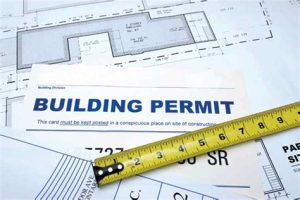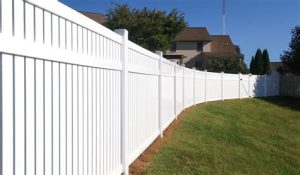Discover essential tips on local fencing regulations, material selection, installation, maintenance, and enhancing curb appeal with decorative fencing for your home.When it comes to enhancing your property, a compliant fence can be a striking addition that not only provides security but also boosts curb appeal. However, selecting the right fence involves more than just aesthetic considerations; understanding local fencing regulations is crucial to ensure your installation meets required guidelines. From choosing the perfect materials to creating a durable and secure structure, each step plays a vital role in achieving your fencing goals. Additionally, maintaining your fence properly can extend its lifespan, ensuring that it remains an attractive feature of your property for years to come. In this blog post, we will explore how to navigate these elements effectively, focusing on both functionality and style, to help you achieve the ideal fencing solution that complements your home.
Understanding local fencing regulations
When considering a new fence for your property, it is crucial to be aware of local fencing regulations. These regulations can vary significantly from one area to another, and they are designed to ensure the safety, aesthetic, and structural integrity of your community.
- Height restrictions: Many municipalities establish specific height limits for fences to maintain neighborhood aesthetics or sightlines.
- Material guidelines: Some areas may have restrictions on which materials can be used, particularly if you’re in a historic district.
- Setback requirements: Fences may have to be installed a certain distance from property lines or sidewalks to prevent encroachment.
It is advisable to consult your local zoning office or building authority to understand the specific regulations in your area. Not only will this help you avoid potential fines or the hassle of having to remove a non-compliant fence, but it will also give you peace of mind knowing that your fence fulfills all legal requirements. Ignoring these regulations can lead to disputes with neighbors and complications down the road, so be informed and compliant from the start.
Choosing the right fence material
When it comes to choosing the right fence material, homeowners have a plethora of options. The selection you make can greatly influence not only the aesthetics of your property but also its overall security and maintenance requirements.
- Wood: A classic fence material, wood provides a natural look that can complement many landscape designs. However, it requires regular maintenance to prevent rot and insect damage.
- Vinyl: Vinyl fences are durable and come in a variety of styles and colors. They are low-maintenance and resistant to weather conditions, making them a popular choice among homeowners.
- Chain Link: An economical option, chain link fences are practical for security without obscuring views. While they may not provide the same aesthetic appeal, they can be coated in vinyl for a more pleasing look.
- Aluminum: Lightweight and rust-resistant, aluminum fences offer durability and low maintenance. They are often used for decorative purposes and can provide a stylish boundary for your yard.
- Composite: Made from recycled materials, composite fences mimic the look of wood while offering enhanced durability and lower maintenance.
Each of these materials has its own set of advantages and disadvantages. When deciding, take into account the climate of your area, your budget, and the amount of maintenance you are willing to commit to. You’ll also want to check with local regulations regarding fence heights and other compliance issues.
Ultimately, choosing the right fence material is about balancing aesthetics, functionality, and cost-effectiveness. With informed choices, you can create a beautiful and secure perimeter for your property that meets your needs for years to come.
Installing a durable and secure fence
When it comes to enhancing your property, installing a durable and secure fence is one of the most effective ways to achieve not only safety but also aesthetic appeal. Choosing the right materials and construction techniques can ensure that your fence stands the test of time while also providing an added layer of protection for your home.
Before beginning your project, it is essential to assess your property and determine the purpose of your fence. Are you looking to keep pets safe, mark boundaries, or enhance privacy? This understanding will guide you in selecting the appropriate design and materials. Common options include wood, vinyl, metal, and chain link, each offering its own benefits and weaknesses.
Once you have selected your materials, the next step is planning the installation. This may require digging post holes, setting the posts in concrete for added stability, and ensuring that the panels are secured tightly. Proper alignment and height are crucial to achieving a professional finish. Additionally, always check local property lines and fencing regulations to avoid disputes with neighbors later on.
| Fence Material | Durability | Cost | Maintenance |
|---|---|---|---|
| Wood | Moderate | Low to Moderate | High |
| Vinyl | High | Moderate to High | Low |
| Metal | High | High | Low |
| Chain Link | Low | Low | Low |
After installation, it’s essential to conduct regular inspections to ensure that your fence remains in optimal condition. Factors such as severe weather, moisture, and pests can affect the durability of your materials. Taking proactive measures like sealing wood fences and cleaning vinyl can lengthen their lifespan. By committing to proper care, you’re not only enhancing your property’s security but also its overall curb appeal.
Maintaining your fence for longevity
When it comes to fence maintenance, consistency and attention to detail are key elements in ensuring your fence remains durable and visually appealing for many years. Whether you have a wooden, vinyl, or metal fence, each material requires specific care and upkeep to prevent wear and damage.
For wooden fences, regular inspection for rot and insect damage is essential. Applying a protective stain or sealant every few years can help maintain its integrity and appearance. Additionally, ensure that any peeling paint is scraped off and reapplied to avoid moisture infiltration, which can lead to decay.
Moving on to metal fences, routine checks for rust or corrosion are crucial. A simple solution is to scrub any rust spots with a wire brush and then paint over them with a rust-resistant paint. If you have a vinyl fence, maintenance is relatively low; however, periodic cleaning to remove dirt and mildew will enhance its longevity and keep it looking fresh.
Ultimately, by regularly maintaining your fence, you not only prolong its lifespan but also safeguard the investment made in your property. Invest the time needed, and reap the rewards of a beautiful and sturdy fence!
Enhancing curb appeal with decorative fencing
When it comes to *enhancing the curb appeal* of your property, decorative fencing serves as both a functional and aesthetic solution. A well-chosen fence can transform the look of your home, making it not only more attractive but also potentially increasing its value. This article explores various ways decorative fencing can elevate your property’s appearance.
One of the key considerations is the *material* used in the construction of your fence. There are a variety of options available, each offering unique benefits.
| Material | Benefits |
|---|---|
| Wood | Warmth and natural beauty, customizable in design. |
| Vinyl | Durable and low maintenance, available in various colors. |
| Wrought Iron | Timeless elegance, extremely strong and durable. |
| Composite | Eco-friendly, combines beauty of wood with durability. |
In addition to *selecting the right material*, decorative elements such as lattice tops, ornate post caps, and unique gate designs can turn a simple fence into a statement piece. Don’t forget the importance of color; a fresh coat of paint or a natural stain can highlight the *architectural features* of your home while ensuring that your fence complements the overall aesthetic of your landscape.
Finally, remember that your decorative fencing should also adhere to local regulations and homeowners’ association guidelines to prevent any potential issues. By carefully considering the design and materials, you can create a welcoming environment that reflects your personal style while enhancing the curb appeal of your property.
Frequently Asked Questions
What are the key benefits of installing a compliant fence?
A compliant fence enhances property security, ensures safety for pets and children, adds aesthetic appeal, and can increase property value while adhering to local regulations.
What does ‘compliant’ mean in the context of fencing?
In the context of fencing, ‘compliant’ means that the fence meets all local zoning laws, building codes, and safety standards, ensuring it is legally acceptable and safe.
How can I find out the local fencing regulations for my area?
You can find local fencing regulations by checking with your city or county planning department, visiting their website, or consulting a local contractor who is familiar with zoning laws.
What are some popular fencing materials that comply with regulations?
Popular compliant fencing materials include wood, vinyl, chain link, and metal. Each material has its own set of regulations regarding height, installation, and appearance.
Can I install a fence without a permit?
It depends on your local regulations. Some areas require permits for any fence installation, while others may only need them for taller or specific types of fences. Always check local laws before proceeding.
What should I consider when choosing the height of my fence?
When choosing the height of your fence, consider local regulations, the purpose of the fence (privacy, security, decorative), and how it will affect your neighbors and the overall aesthetics of your property.
Are there any potential fines for non-compliance with fence regulations?
Yes, there can be fines for non-compliance with fence regulations, which may include removal of the fence, additional permits, or penalties. It’s crucial to ensure your fence adheres to local laws to avoid these issues.





